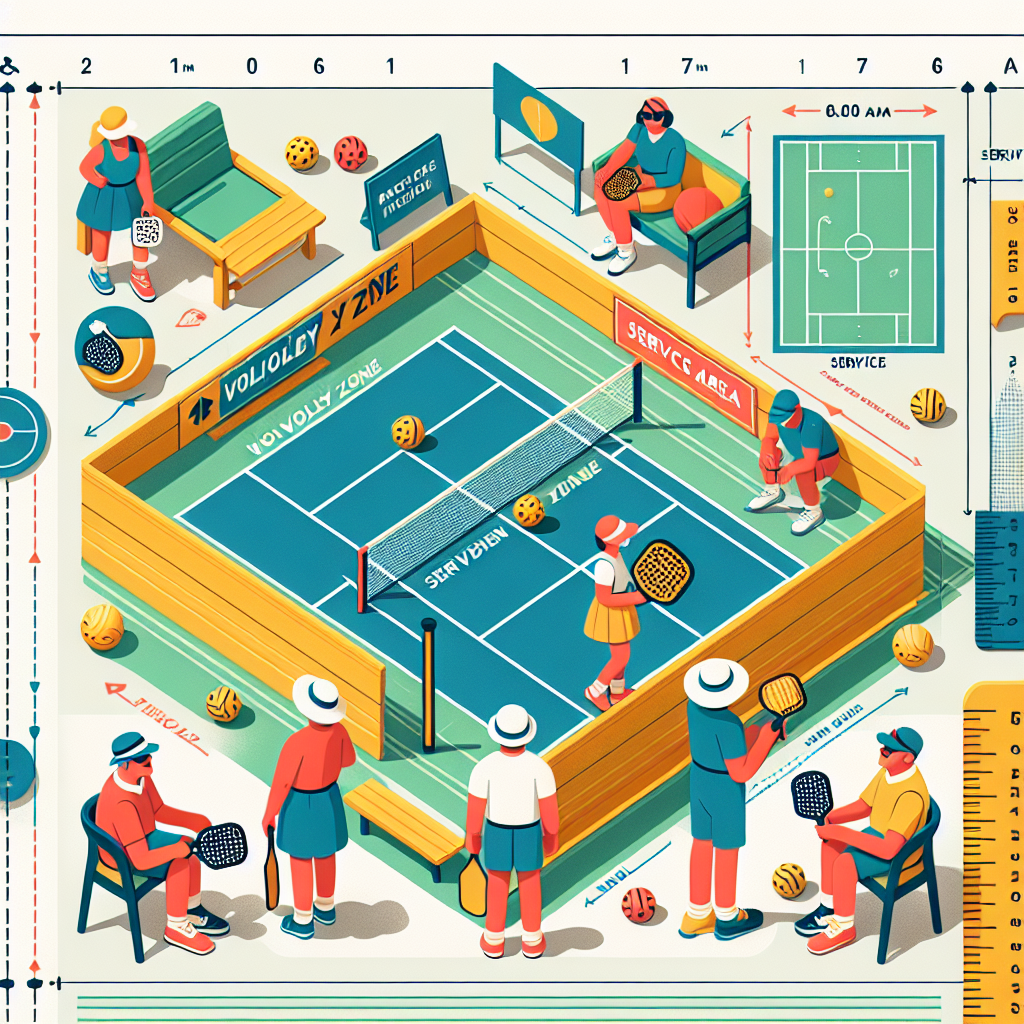
Pickleball Court Layout and Dimensions Explained for Beginners
authorShare
Pickleball, an increasingly popular sport, blends elements of tennis, badminton, and table tennis. Whether you're a newbie or polishing your skills, understanding the pickleball court layout and dimensions is crucial. For beginners, it ensures you're playing by the rules and helps you improve your game strategy. Let's delve into the specifics of pickleball court construction to help you get started!
Article Outline
- Introduction
- Pickleball Court Dimensions
- Net Height and Placement
- Key Court Areas
- Differences from Other Courts
- Conclusion

Introduction
Pickleball's rising popularity stems from its accessibility and fun dynamic. To fully enjoy the game, understanding the pickleball court layout is essential. Comparable yet distinct from a tennis or badminton court, a pickleball court adheres to specific dimensions and has unique features that contribute to its charm. Let's explore these details to enhance your understanding and enjoyment of the game.
Pickleball Court Dimensions
The standard pickleball court size aligns closely with that of a badminton court. Officially, a pickleball court measures 20 feet wide by 44 feet long for both singles and doubles play. The following are key dimensions to remember:
- Total Court Dimensions: 20 x 44 feet
- Non-Volley Zone (The Kitchen): Extends 7 feet from the net on both sides
- Service Courts: Each service area in front of the baseline is 10 feet wide
- Baseline: The back boundary line runs parallel to the net
Net Height and Placement
A vital aspect of the game is the net height and how it's installed. In pickleball:
- Net Height at the Sides: 36 inches (3 feet)
- Net Height at the Center: 34 inches to allow the ball room while still demanding skillful play
The net runs the full 20-foot width of the court, firmly anchored at the sides.

Key Court Areas
The court is divided into several important areas:
- Non-Volley Zone (Kitchen): This 7-foot area on both sides of the net prohibits volleying (striking the ball before it bounces).
- Service Areas: Each back half of the court is divided into left and right service areas, critical for serving strategy.
- Baseline: The furthest boundary, where players often position themselves for powerful returns.
Differences from Other Courts
While similar to tennis courts in that both facilitate racket sports, pickleball courts have notable differences:
- Pickleball courts are smaller, making them accessible for all ages and physical abilities.
- The lower net height changes volley dynamics and strategy.
- The presence of the "kitchen" adds unique tactical elements not present in tennis or badminton.
Conclusion
Understanding the layout and dimensions of a pickleball court not only enhances your playing experience but also gives you a strategic edge. As you get accustomed to the court, remember that this rapidly growing sport is all about having fun and staying active. Whether you're playing in your backyard, a community center, or entering a tournament, a well-laid-out court is the foundation of a great game.
If you're fueling up for a day on the court, consider trying Side Out Coffee. We roast beans fresh to order and ship our premium blends nationwide. Start your day with a fresh cup from sideoutcoffee.com, and play your best game of pickleball with the perfect coffee companion.




